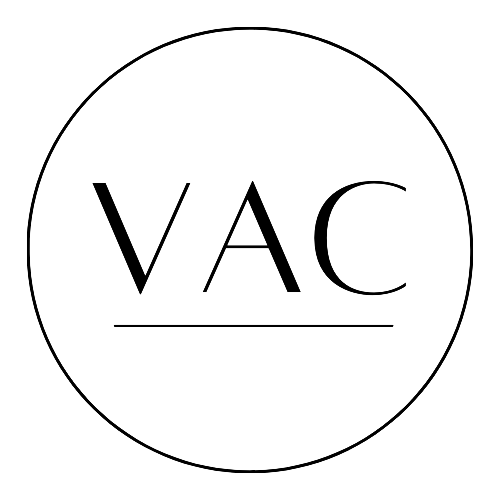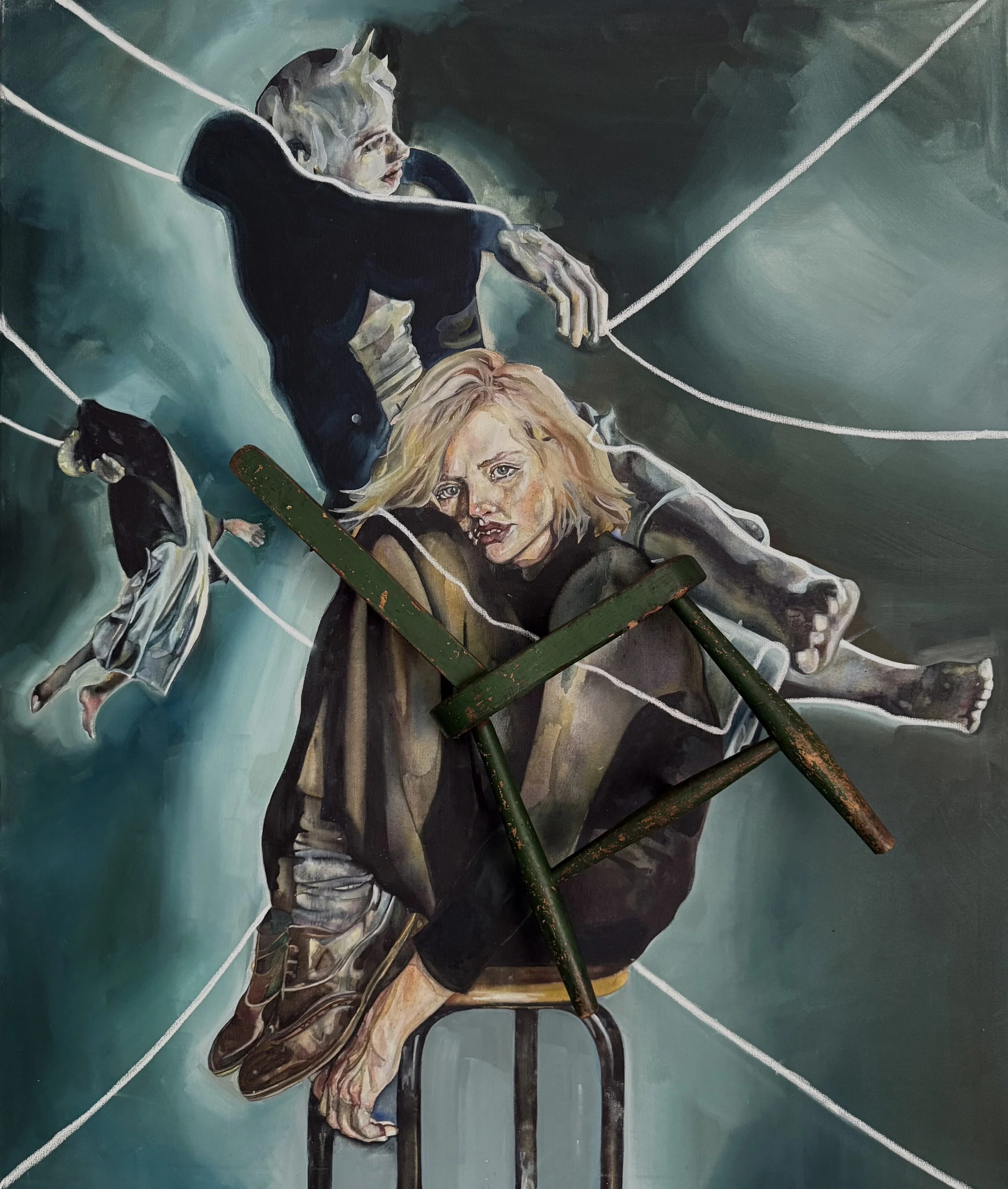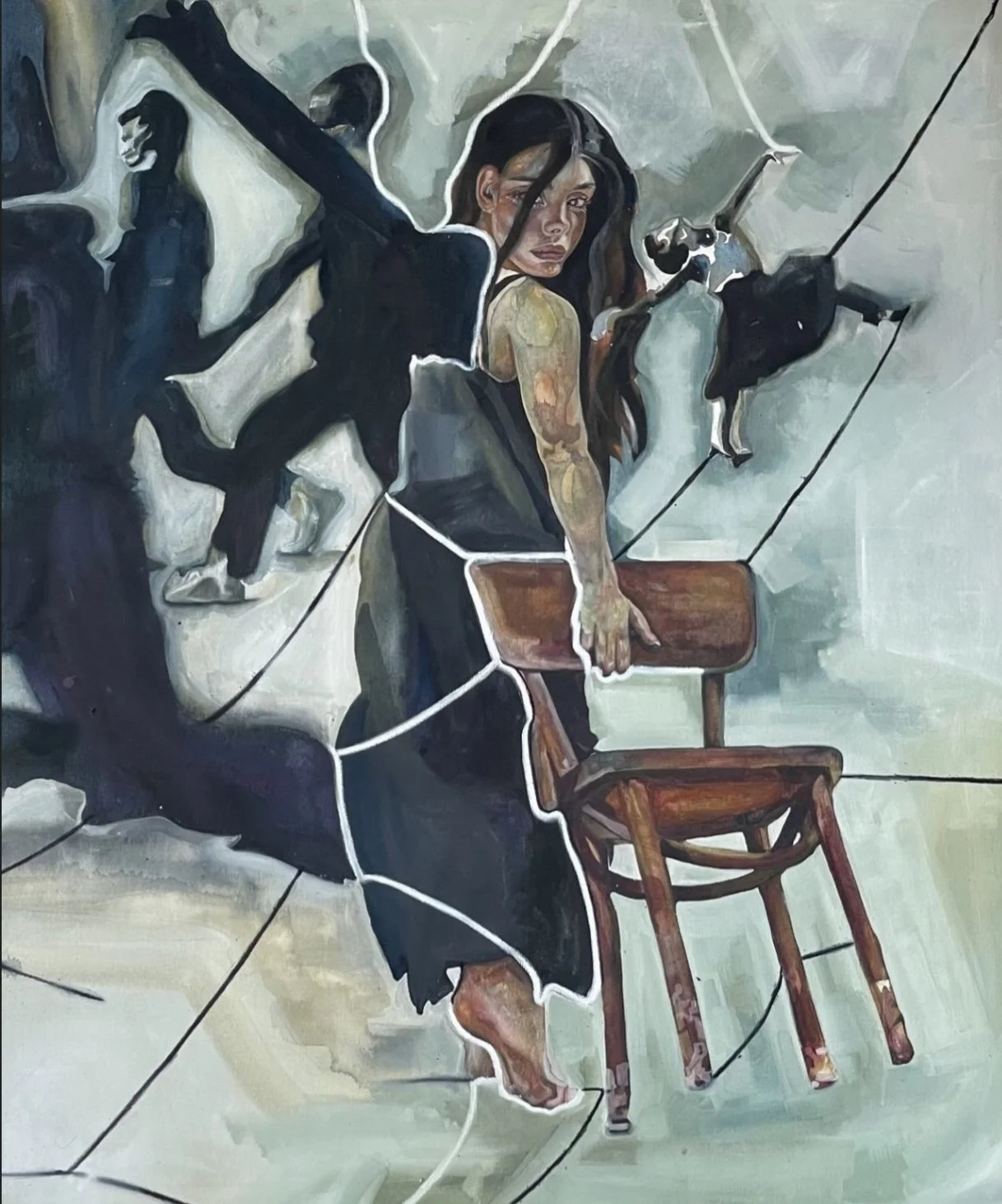Kseniia Fleisher: The Endless Flight of Imagination
The works of Kseniia Fleisher explore honesty, vulnerability, and human nature. Using a combination of watercolour and oil, her expressive technique becomes a tool for deep emotional and psychological analysis. Her art reflects the fragility, intensity, and complexity of the human experience. Fleisher’s art invites viewers into a complex inner dialogue. It speaks of universal emotions — fear, tenderness, doubt, hope — while rooted in deeply personal experience. Her paintings open a space where self-exploration and shared humanity meet, showing us that though nothing remains unchanged, every moment matters.
How did your creative journey begin?
Since childhood, I have been drawing, but I never treated my talent as something serious. Drawing came easily to me — it was something I did really well without any kind of “effort.” I was always trying to direct my energy elsewhere: as a child, I looked for myself in different activities, I loved the piano and classical music, dreamt of playing it, or dancing ballet, or playing chess — but none of it worked out. Later, I graduated from art school with distinction, and for the first 15 years of my conscious life — as a teenager and an adult — I didn’t plan to connect my life with art. Still, I often received portrait commissions from friends. After the birth of my daughter, something clicked inside me, and I found myself in what I was originally meant to do — painting, art history, and the art market. About eight years ago, I roughly understood what I wanted to express on canvas, but I couldn’t come to an agreement with myself or with what I saw as the final result. So I started studying — I read a lot of classical and modern art literature, trained my visual perception, and drew every day, because my technique left much to be desired. I was in postnatal depression, and that became the turning point — the beginning of my lifelong theme: exploring my personality, myself and others, learning to have an honest and open dialogue with myself, allowing myself to be in this world. I love ballet and how the human body can be so flexible. That resonates deeply with me — it reflects the idea of human flexibility towards life circumstances, the ability to bend but not break, to survive, live, grow, and move past one’s inner barriers. One could say that the birth of new life revealed my true desire — not to run from myself, but to run towards myself. I completely “fell” into art, and now it’s a lifelong current. Exactly eight years ago, I allowed myself to become who I truly am — an artist. It was the best act of forgiveness and liberation from self-punishment and neglect of my own talent. Eight years ago, with the birth of my child and my inner despair, I allowed myself to paint — and that was the beginning of my career.
Your paintings often explore honesty and vulnerability. How do you translate such personal emotions into visual form?
I simply see images in my head. I know it sounds strange, but who said I’m not strange? We all experience millions of emotions every day, and in my case, it’s destructive not to let them out. I used to see my vulnerability as a weakness. Like many, it was easier for me to adapt to society by being “convenient” and emotionally positive — it was beneficial and brought many advantages, up to a certain point. But with art entering my life the way it did, I realised that vulnerability is more about strength than weakness. It is my strongest quality. Vulnerability is who I am. I am still convinced that choosing yourself — including your “flaws” — is about freedom and salvation, about honesty with yourself. A personal dialogue with oneself is the hardest, but also the most healing one. My art is like a series, a film noir that I make colourful — a film that lasts a lifetime. What I see is something everyone experiences, but each person interprets it in their own way. I love working with the human body — for me, it’s the best language to express any emotion and direction of the story. I can’t really explain how it happens: I simply live through something, and it turns into a scenario in my head, which I then transfer onto the canvas. I don’t think about the theme in advance — I just live my day and reinterpret my circumstances through painting. I work with what’s ordinary and familiar, but the way I see it is honest, unique, and never pre-constructed — just like life itself.
What does a typical day in the studio look like for you, and how has your art practice grown or changed?
I don’t have a studio — it’s my dream. I can see it in my mind, in my beloved London, and I imagine what it will look like. Right now, I work from home, and I always laugh that I’m a “shoemaker without shoes.” But for now, it saves me time and gives me a few extra hours for my practice. I’m just an ordinary person — a mother and a wife. I would love to say that I wake up, have coffee, look out at the theatre from my window, light incense and go to my easel — but I don’t even have one. It looks quite different in reality. My goal every day is simply to work as much as I can, balancing between daily life and procrastination, which occasionally sneaks up on me. To put it simply — I lay my canvas on the floor, spread out my paints, and start painting. I work on every detail until I feel a sense of inner admiration and satisfaction. After moving to London, my painting changed dramatically. I became more fascinated with classical painting — brushwork, technique, and detail. It may sound strange, but I started avoiding visual noise and began to purify my compositions. Every day, I work on my technique, and I have so much more to learn ahead. The thought that I might never reach the “ideal” actually brings me joy — because striving itself is life, growth, and the thirst of an artist. I work with two seemingly incompatible materials — oil and watercolour. It’s like two completely different people who have chosen each other and are learning to build a relationship. Let’s see what happens next — I’m ready to go through all their crises.
Theater plays a role in your work, with figures like stage characters. What draws you to this theatrical lens of storytelling?
Theatre is a script, a play already written by the author. My connection to theatre or cinema is more about the cyclical and changeable nature of stories, emotions, and interpretations. I see my art as a kind of theatrical environment, where I am the director, the producer, and the actor — all in one. Unlike theatre, I don’t rehearse; I immediately present the project, without a poster or a pre-planned act. The different figures in my paintings — and my life in general — remind me of an inner stage, an endless film playing in my head. There’s a never-ending recording tape and many roles my characters have yet to play. The viewers of my work read my paintings like an endless film or a play without a finale. They experience their own emotions through my stories. It’s a kind of backstage world that I open to others — not for everyone, but for those who truly see themselves in it and willingly take part in this immersion.
How has social media impacted your work?
Few people know that my first master’s degree was in advertising and PR — back when it wasn’t yet mainstream, and Samantha Jones was still something of a pioneer in the field. I know very well how important it is for an artist not to paint “for the drawer,” and how crucial it is to be present on platforms that suit them. I look at the world through social media — I absorb information, discover interesting people, and stay connected to those I care about. I don’t have a big, promoted account, but perhaps one day I will. Or maybe not. The right people always find their way to me — often through Instagram. Social media allows you to create your own PR strategy, express your style and approach — and that’s exactly what I do. It helps me discover new people, publications, and ideas. Photography is an important part of my artistic practice. Social media, for me, is a way to express myself, find aesthetic pleasure, and have a small creative escape through artistic photography.
You work without sketches, letting intuition guide you. How does this spontaneity affect the outcome of your paintings?
The best thing about my art is my ability to transfer what’s in my head directly onto the canvas. I’m not a perfectionist, though I do strive for a certain perfection. My art is about life and emotion — about trusting myself, having confidence in my hand, my choices, and the image in my mind, rather than following a pre-planned sketch. Working from a small pre-drawing feels suffocating to me — I don’t need it, and I don’t want it. In technique, I’m drawn to the idealisation of the brushstroke, but in composition, I need life, imperfection, and expression. I always rely on my feelings and know that what I want to transfer onto the canvas doesn’t require preliminary planning. Working without sketches carries the initial impulse and energy of the author — something the viewer can easily feel.
How do you want viewers to feel when they encounter your paintings?
My goal is not to provoke specific emotions. I simply paint what I live through. Each person who resonates with my art interprets it in their own way. A painting is like a mirror — a reflection of oneself. My aim is to show that we are not alone, even when it feels that way. We all go through different cycles, and that’s what I want to share — if we feel something, it means we are alive. Art is about healing. Each of us has our own inner reflection, and mine is one of them. My purpose is to encourage people to see themselves the way they wish to be seen, to not be ashamed of it, to reveal what might seem insignificant, and to understand that each of us is unique. For me, art is about individuality and the endless flight of one’s imagination.
Instagram: @Fleisher.kseniia
Published on October 31, 2025






